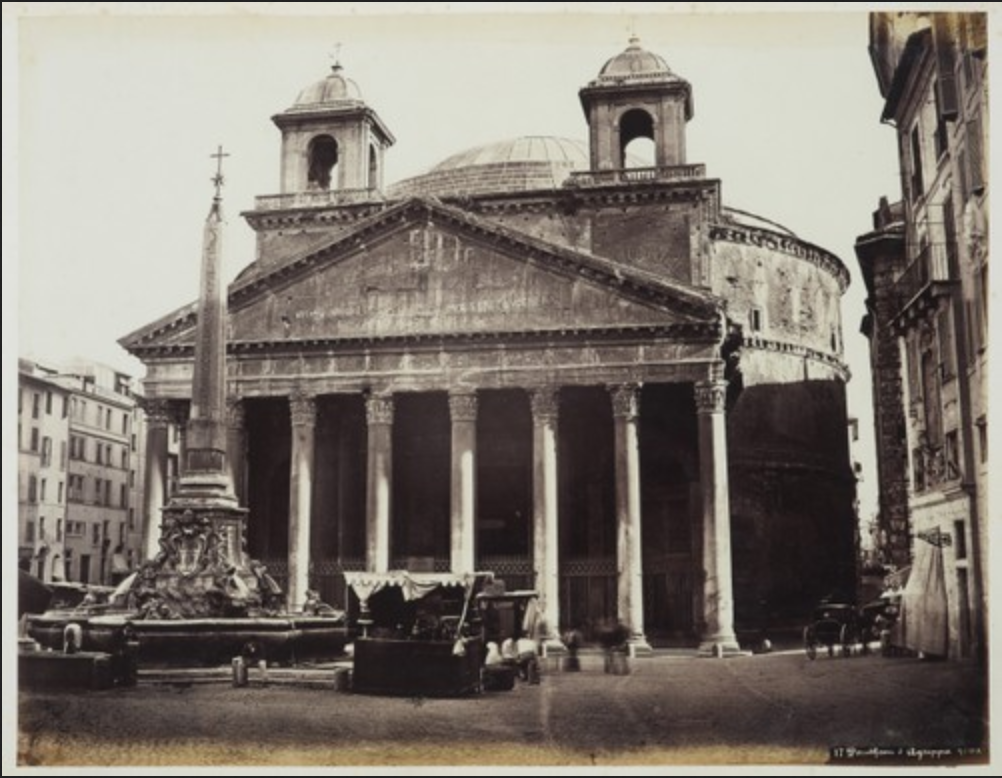Having undergone multiple architectural, ornamental, and functional changes—beginning with its reconsecration as a Christian Church in the 7th century CE—in the 19th century, the interior of the Pantheon little resembled its original self. The exterior of the temple had also suffered through multiple modifications, including Pope Urban VIII Barberini’s stripping of the bronze—repurposed for the manufacturing of arms—from the portico beams. To justify the removal, he claimed the metal was intended for the decoration of Bernini’s Baldacchino in St. Peter’s, a seemingly lesser offense. Of these bastardizations, perhaps the most inane and superfluous—and as a result, the most short-lived—was the replacement of the single, centrally placed medieval campanile by twin bell-towers. The resulting belfries were subsequently referred to, unflatteringly, as the “ass’s ears.” Despite having been designed by Francesco Borromini—who had also been commissioned to replace the aforementioned denuded portico beams—the “ears” were erroneously attributed to Gian Lorenzo Bernini. In the mid-19th century—and before Claude’s visit to Rome in Arthur Hugh Clough's Amours de Voyage, hence his need to “dream…of the belfries”—Pius IX, in an effort to restore the exterior to its traditional and more austere appearance, had the two towers removed. Despite all outward appearances, the interior remained a hybrid church cum museum of sepulchered niches, Renaissance paintings, and Christian sculpture—the “Martyrs, and Saints, and Confessors, and Virgins” to which Claude refers—with all but a few vestiges of its ancient pagan origins eradicated, and all hints of its intended purpose forever remaining buried.
"Pantheon," Rome (Victorian Photographs by Robert MacPherson)
Type: Gallery Image | Not Vetted


